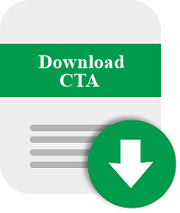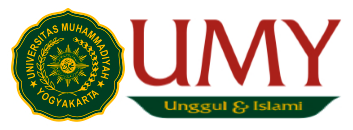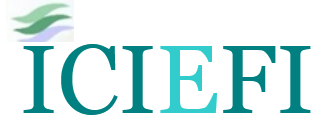The Potential of Fintech in Enhancing the Use of Salam Contract in Islamic Banking
Abstract
An Islamic banking system employs different Shariah contracts to develop and offer products and services in different jurisdictions. One of such contracts is salam which is a forward sale contract. This study aims to examine the practice of salam as an instrument of Islamic banks financing and how technology can be used to enhance its application thereto. A qualitative approach is employed in this research where primary data sources on salam contract were examined, along with content analysis of relevant secondary data sources on the contract and how its practiced in Islamic banking. In furtherance of that practice, salam instrument can be leveraged on technology, mainly the blockchain. This would enhance its operation by bringing about automation, transparency, fair pricing, saving time and cost as well as enabling widespread access of Islamic bank financing to smaller enterprises to promote societal well-being. This research reveals that salam instruments cater for different clients’ needs and enjoy patronage in many jurisdictions even though it is currently the least utilized contract in Islamic banks financing due to divergence of juristic views on its general permissibility. Also, salam is an exceptional contract for Islamic banks financing of agriculture and related enterprises among others. The research offers an insight for Islamic banks to leverage on technology in utilizing salam contract towards providing financing for variety of clients, particularly poor farmers. Similarly, jurisdictions not practicing salam stand to learn of the benefits of using salam to offer technologically innovative yet affordable Islamic banking products/services for variety of clients.
Keywords
Full Text:
PDFReferences
Abdul Rahman, Y., (2010). The art of islamic banking and finance, USAHoboken:, John Wiley Finance.& Sons, Inc.
Abozaid, A. (2010, ). Personal finance by tawarruq and organized salam. Retrieved January 5, 2020, from http://abdulazeemabozaid.com/en/category/media-interviews-articles/media-articles-in-arabic/.
Abu Dhabi Commercial Bank, (n.d.). Salam personal finance process flow. Retrieved August 19, 2019 from https://www.adcb.com/islamicbanking/finances/salampersonal/Salam_Personal_Finance_Process_Flow.asp
Aburaida, K. M. M. (2014). Rural finance as a mechanism for poverty alleviation in Sudan, with an emphasis on “Salam” Mode. European Scientific Journal, 7(26), 157-166.
Ahmed, M. A. (2007). Shariah opinion (fatwa) on Istisna contract and salam, department of research and development, Al-Barka Banking Group. Retrieved January 15, 2020, from Available [online] at http://www.albaraka.com/media/pdf/Research-Studies/RSIS-200706201-EN.pdf (Accessed December 8, 2019).
Ajmal, M. M., Rafay, A., & Sadiq, R. (2017). Pricing of bai salam: an analytical perspective. International Journal of Business and Society 18(S1), 167-176.
Al-baraka Bank, (n.d.). Salam. Retrieved June 17, 2019 from http://www.albaraka.com.sd/index.php/en/pages/details/51/46.
Al-Barakah Bank, (n.d.). Trading. Retrieved June 17, 2019 from http://www.al-baraka.com/products.php?key=crop§ion=trading.
Al-Zaabi, O. S. (2010). Salam contract in islamic law: A survey. Review of Islamic Economics, 14(2), 91-122.
Amine, M. B. M (2008). Risk management in iIslamic finance: an analysis of derivatives instruments in commodity markets. Leiden: Brill, Netherlands, 337.
Amine, M. B. M. (2001). Istisna’ in islamic banking and finance, law & practice. Kuala Lumpur, Malaysia: A.S. Noordeen.
Amjad, A. (2015). Impact of Bai Salam on financial inclusion and Agro-production Business: A case of wheat producing small farmers in Faisalabad (Unpublished Doctoral Dissertation)., Lahore: COMSATS Institute of Information Technology, Pakistan, 342.
Awan, S. H., Ahmed, S., Safwan, N., Najam, Z., Hashim, M. Z., & Safdar, T., (2019). Role of internet of things (IoT) with blockchain technology for the development of smart farming. Journal of Mechanics of Continua and Mathematical Sciences, 14(5), 170-188.
Ayub, M. (2007). Understanding Islamic Finance., Hoboken: John Wiley & Sons, Inc., USA.
Banerjee, A., (2019). Blockchain with IOT: Applications and use cases for a new paradigm of supply chain driving efficiency and cost. Advances in Computers, 115, 259-292.
Bank Negara Malaysia., (2016). Islamic Finance Development. Retrieved on February 1, 2020, 2018 from https://www.bnm.gov.my/files/publication/fsps/en/2016/cp04.pdf.
Bank Negara Malaysia. (2018). Policy Document BNM/RH/PD029-3 - . Capital Adequacy Framework for Islamic Banks (Risk-Weighted Assets). Retrieved February 11, 2020, from Available [Online] at http://www.bnm.gov.my/index.php?ch=57&pg=137&ac=537&bb=file (Accessed 22 December 2019).
Beer, A., & Faulkner, D. (2014). How to use primary and secondary data. In Stimpson, R. J. (Ed.), Handbook of Research Methods and Applications in Spatially Integrated Social Science (pp. 192-209). Northampton: Edward Elgar Publishing.
Calcaterra, C. and & Kaal, W. A. (2020). Reputation Protocol for the Internet of Trust. In Compagnucci, M. C., et al. (Eds.),. Legal Tech and the New Sharing Economy: Perspectives in Law, Business and Innovation, Singapore: Springer Nature Pte Ltd., 123-147. DOI: 10.1007/978-981-15-1350-3_8.
Chermack, T. J., & Passmore, D. L. (2005). Using journals and databases in research. Research in organizations: Foundations and methods of inquiry, 401-418.
Christidis, K., & Devetsikiotis, M. (2016). Blockchains and Smart Contracts for the Internet of Things. IEEE Access, 4, 2292-2303.
Cownie, F., &Bradney, A. (2013). Socio-legal studies: a challenge to the doctrinal approach. In Watkins D. and Burton M. (Eds), Research Methods in Law (pp. 42-62). Singapore: Routledge.
Dchieche, A., & Aboulaich, R. (2016). New Approach to Model Salam Contract for Profit and Loss Sharing, International Journal of Applied Engineering Research, 11(2), 909-916.
Drisko, J. W., & Maschi, T. (2016). Content Analysis - Pocket Guides to Social Work Research Methods. New York: Oxford University Press.
Ebrahim, M. S., & Rahman, S. (2005). On the pareto-optimality of futures contracts over Islamic forward contracts: Implications for the Emerging Muslim Economies, Journal of Economic Behaviour & Organization, 56(2), 273-295. DOI: 10.1016/j.jebo.2003.09.007.
Ehsan, A., & Shahzad, M. A. (2015). Bay’ Salam: A Proposed Model for Shariah Compliant Agriculture Financing. Business & Economic Review, 7(1), 67-80.
Ge, L., Brewster, C., Spek, J., Smeenk, A., & Top, J. (2017). Blockchain for Agriculture & Food - Findings from Pilot Study. Wageningen: Wageningen Economic Research Report: Netherlands, 34.
Giancaspro, M. (2017). Is a ‘smart Contract’ really a Smart Idea? Insights from a legal perspective. Computer Law and Security Review, 33(6), 825-835.
Global Islamic Finance Report (2011). Islamic Retail Banking Products. 50-53. Retrieved February 11, 2020, from Available [Online] at http://www.gifr.net/gifr2011/contents/ch_03.PDF (Accessed 18 December 2019).
Harran, S. Foh Sen, A.Y. & Haji Masri, S.A. (2010). An Islamic Microfinance Enterprise: An Islamic Microfinance Enterprise: The Financial Vehicle that will change the face of the Islamic World - The Power of Salam The power of Salam Financing, Bloomington: Xlibris Publishing, USA. International Conference in Islamic Finance 2010, Brunei.
Hassan, R., Muneeza, A., & Wisham, I. (2011). Reconciling the dual banking system: Application model for salam contracts in Malaysia. Malayan Law Journal 5, 59-79.
Hisham, A. F. B., & Jaffar, M. M. (2017, August). Modeling Commodity Salam Contract between Two Parties for Discrete and Continuous Time Series. In Salleh, Zabidin et al., (Eds.), AIP Conference Proceedings, (Vol. 1870, No. 1, pp. 040-022). Kuala Terengganu, Malaysia. Melville: AIP Publishing, LLC, USA.
Hutchinson, T. (2015). The doctrinal method: incorporating interdisciplinary methods in reforming the law. Erasmus Law Review, 8, 130-138.
Ibn Abidin, (1996). Hashiyat Rad al Muhtar, Cairo, Egypt: Al- Babi al Halabi, . 209. (cited in Amine, M.B.M., (2008). Risk Management in Islamic Finance: An Analysis of Derivatives Instruments in Commodity Markets, Leiden: Brill, Netherlands, 63).
Izhar, H., & Hassan, Z. S. A. (2013). Applying Core Principles of Risk Management in Islamic Banks’ Operational Risk Analysis. Afro Eurasian Studies, 2(1-2), 15-40.
Kaleem, A. & Wajid, R.A. (2009). Application of Islamic banking instrument (Bai Salam) for Agriculture financing in Pakistan. British Food Journal, 111(3), 275-292.
Kaleem, A., & Ahmad, S. (2016). Bankers’ perception towards bai salam method for agriculture financing in Pakistan. In Harrison, T. & Ibrahim, E. (Eds.). Islamic Finance: Principles, Performance and Prospects, London: Palgrave Macmillan, 192.
Kamilaris, A., Fonts, A. and & Prenafeta-Boldu, F.X. (2019). The rise of blockchain technology in agriculture and food supply chains. Trends in Food Science and Technology, 91, 640-652.
Kurniawansyah, D., & Agustia, D. (2017). A Parallel Bai’ As-Salam Financing Mechanism for Banana Farmers, Micro Enterprises and Medium Enterprises. Advanced Science Letters, 23(9), 8530-8534.
Mansuri, M.T., (2006), Islamic Law of Contracts and Business Transactions, New Delhi, India: Adam Publishers & Distributors., New Delhi; India.
Mayer, I. (2015). Qualitative research with a focus on qualitative data analysis. International Journal of Sales, Retailing and Marketing, 4(9), 53-67.
Miah, M. D., & Suzuki, Y. (2018). A Critique to a Naive Critique to ‘Murabaha’ ‘Tawarruq’ syndrome. In Suzuki, Y. & Miah, M. D., (Eds.), Dilemmas and Challenges in Islamic Finance: Looking at Equity and Microfinance, 1st ed., London, England: Routledge, 234.
Moser, A., & Korstjens, I. (2018). Practical guidance to qualitative research. Part 3: Sampling, data collection and analysis. European Journal of General Practice, 24(1), 9-18.
Muneeza, A., Yusuf, N.N.A., & Hassan, R. (2011). The Possibility of Application of Salam in Malaysian Islamic Banking System. Humanomics, 27(2), 138-147. DOI: 10.1108/08288661111135135.
Muneeza, A., Zainudin, N. A., Ali, R., Ibrahim, S. N., & Mustapha, Z. (2019). Application of Ta’widh and Gharamah in Islamic Banking in Malaysia. The Journal of Muamalat and Islamic Finance Research, 16 (1), 1-16.
Obaidullah, M. (2015). Enhancing food security with Islamic microfinance: insights from some recent experiments. Agricultural Finance Review, 75(2), 142-168.
Obaidullah, M., & Mohamed-Saleem, A. (2008). Innovations in islamic microfinance: lessons from muslim aid's Sri Lankan experiment. Islamic Microfinance Working Paper Series No. 01-09, 16. Retrieved February 15, 2010 from Available [Online] at https://ssrn.com/abstract=1506075. (Accessed December 8, 2019).
Onwuegbuzie, A. J., Leech, N. L., & Collins, K. M. (2010). Innovative data collection strategies in qualitative research. Qualitative Report, 15(3), 696-726.
Peters, G. W., & Panayi, E. (2016). Understanding modern banking ledgers through blockchain technologies: Future of transaction processing and smart contracts on the internet of money. In Tasca, P. et al., (Eds.), Banking Beyond Banks and Money (pp. 239-278), Cham: Springer., 239-278.
Pilkington, M. (2016). Blockchain technology: Principles and applications. In Olleros, F., and Zhegu, M. (Eds). Research Handbook on Digital Transformations (pp. , 225-253), Northampton: Edward Elgar Publishing.
Razali, S. S. (2012). Revisiting the principles of gharar (uncertainty) in Islamic banking financing instruments with special reference to bay al-inah and bay al-dayn: towards a new modified model. International Journal of Financial Management, 2(1), 33-43.
Rosly, S.A., & Ismail, H. H. (2010). Salam as a mode of agriculture finance in Malaysia: An analysis of risk-taking behaviour of contracting parties. Available [Online] Retrieved June 17, 2019 from at https://www.scribd.com/document/153519109/Salam-as-a-Mode-of-Agri-Finnance-by-Saiful-Rosly-and-Hamdan.
Sahih Bukhari. (1979). Muhmmad Muhsin Khan (trans). Lahore, Pakistan: Qazi Publication.
Saiti, B., Afghan, M., & Noordin, N.H. (2018). Financing agricultural activities in Afghanistan: a proposed salam-based crowdfunding structure. ISRA International Journal of Islamic Finance, 10(1), 52-61.
Saqib, L. (2011). Financing agriculture through islamic commercial transaction (theory and practice). 1st edition, Latvia, Riga, Latvia: Lambert Academic Publishing, 192.
Saqib, L., Roberts, K. W., Zafar, M. A. & Khan, K. (2014). Salam (advance payment sale): A realistic approach to the concept in Islamic finance and its application to the agricultural sector in Pakistan. Hamdard Islamicus, 37(3), 43-83.
Sciforce, (2019). Smart Farming: The future of agriculture. Retrieved on 28th October 28, 2019 from https://www.iotforall.com/smart-farming-future-of-agriculture/.
Shaun Crawford, S., Meadows, I., & Piesse, D. (2019). Blockchain technology as a platform for digitization: implications for the insurance industry. Ernest & Young. Retrieved October 28, 2019 from Available [Online] at https://www.ey.com/Publication/vwLUAssets/EY-blockchain-technology-as-a-platform-for-digitization/$FILE/EY-blockchain-technology-as-a-platform-for-digitization.pdf (Accessed 20 December 2019).
Sonnenfeld, G. (2019). Zage blockchain report - real world applications of blockchain technology: q & a o: on blockchain technology use now and into the future. in Zage Blockchain Report - Real World Applications of Blockchain Technology, Retrieved December 12, 2019 from p. 42. Available [Online] at https://zage.io/report/. (Accessed 12 December 2019).
State Bank of Pakistan. (2017). Manual on salam based financing for farm/crop production purposes. Retrieved on 12 February 12, 20198 from http://www.sbp.org.pk/acd/2011/C3-Annx.pdf.
Suayb, G. A. (2010). islamic structured trade finance: a case of cotton production in West Africa. International Journal of Islamic and Middle Eastern Finance and Management, 3(1), 20-35.
Sundararajan, V. (2013). Risk Characteristics of Islamic Products: Implications for Risk Measurement and Supervision. In Archer, S. and Karim, R.A.A. (Eds.) Islamic finance: The regulatory challenge (pp. 49-75), Singapore: John Wiley & Sons, Pte., Singapore, 49-75.
Usmani U. A. (2019), Sharia rulings of bill discounting and its alternatives. In: Hassan F., Osman I., Kassim E., Haris B., Hassan, R. (Eds.) Contemporary Management and Science Issues in the Halal Industry (pp. 495-508.). Singapore: Springer.r, Singapore.
Utama, S., Suwarsi, A. A., & Listiono. (2019). The role of Islamic banking in agriculture financing (case study of Indonesian agriculture sector). Humanities and Social Sciences Reviews, 7(2), 261-269.
Webley, L. (2010). Qualitative approaches to empirical legal research. In (Eds.), Cane, P. & Kritzer, H. M., The Oxford handbook of empirical legal research (pp. 926-950), New York: Oxford University Press.
Yu, L., Zhang, G., Jia, J., Gao, W., & Tao, S., et al. (2017). Modern agricultural product supply chain based on blockchain technology. Transactions of the Chinese Society for Agricultural Machinery, 48, 387-393.
Yusoff, M., & Kamdari, A. (2016). The Contract of bay-al-salam and bay-al-istisna in Islamic commercial law: A comparative analysis. Prosiding Persidangan Kebangsaan Ekonomi Malaysia Ke-11, Vol. 1, (pp. 590 – 594), July 27-28, Putrajaya: Malaysia.
Zheng, Z., Xie, S., Dai, H., Chen, X., & Wang, H. (2017). An overview of blockchain technology: Architecture, consensus, and future trends. In IEEE International Congress on Big Data 2017 (BigData Congress) Proceedings, (pp. 557-564), December 11-14, Boston: USA.
Zuhaily, W. (2007). Financial transactions in Islamic jurisprudence, Vol. 1 (English Translation) 2nd Edition, Damascus: Dar Al Fikr.
DOI: https://doi.org/10.18196/ijief.3231
Refbacks
- There are currently no refbacks.
Copyright (c) 2020 International Journal of Islamic Economics and Finance (IJIEF)

This work is licensed under a Creative Commons Attribution-ShareAlike 4.0 International License.
International Journal of Islamic Economics and Finance (IJIEF)
International Program for Islamic Economics and Finance
Department of Economics
Faculty of Economics and Business
Universitas Muhammadiyah Yogyakarta
Pascasarjana Building, Ground Floor
Jl. Brawijaya (Ringroad Selatan), Kasihan, Bantul
D.I. Yogyakarta 55183, INDONESIA
Official email: ijief@umy.ac.id












1.jpg)